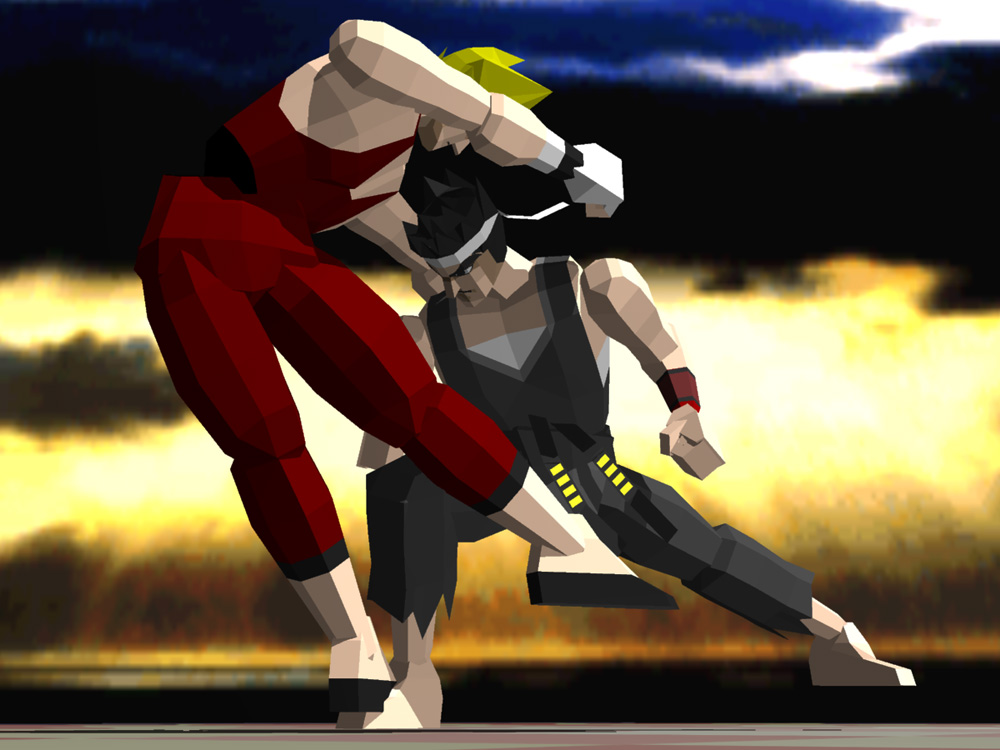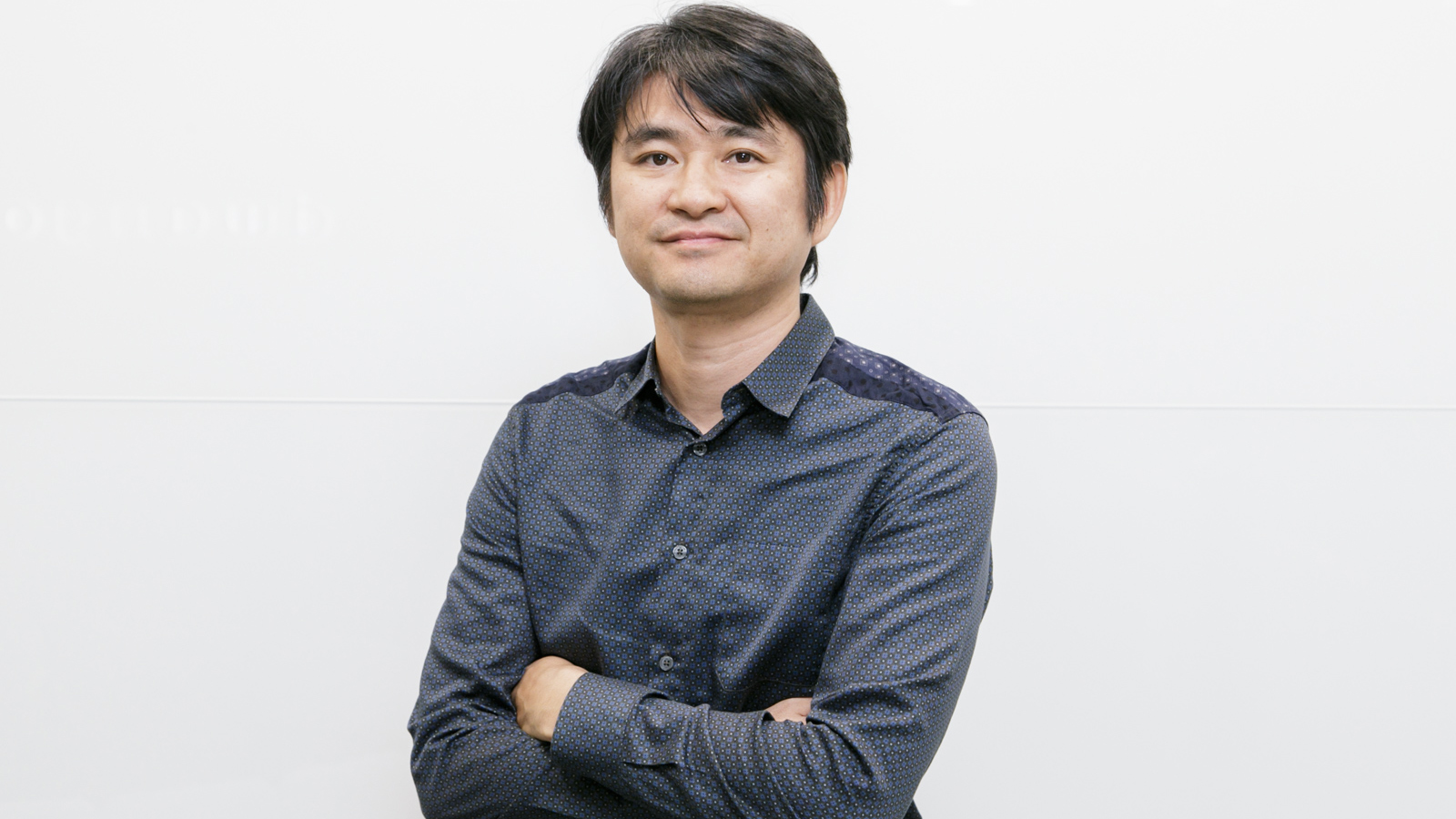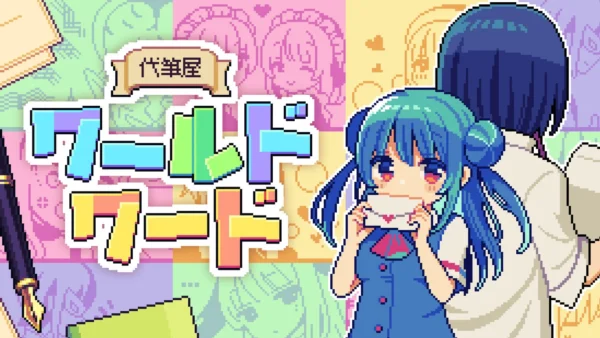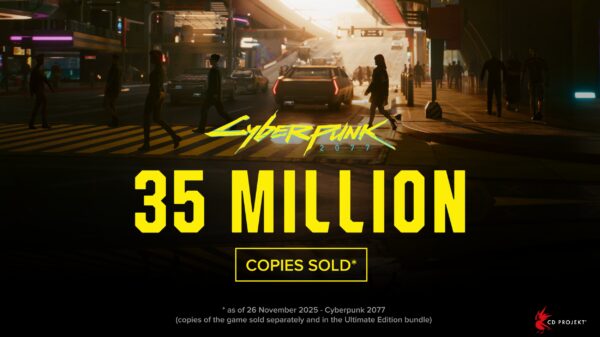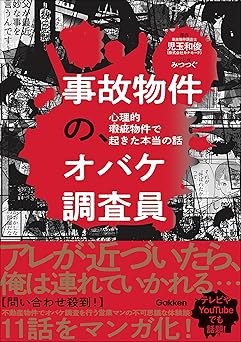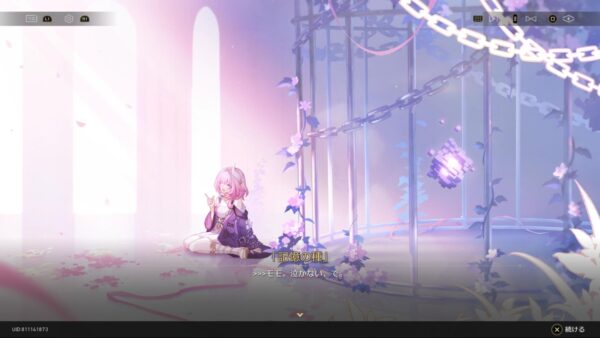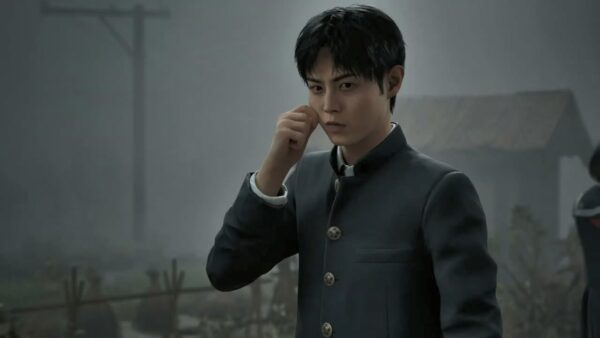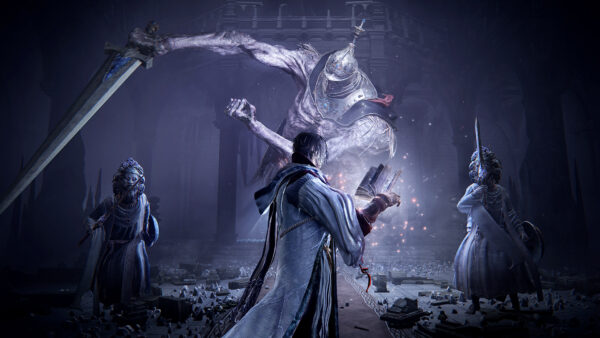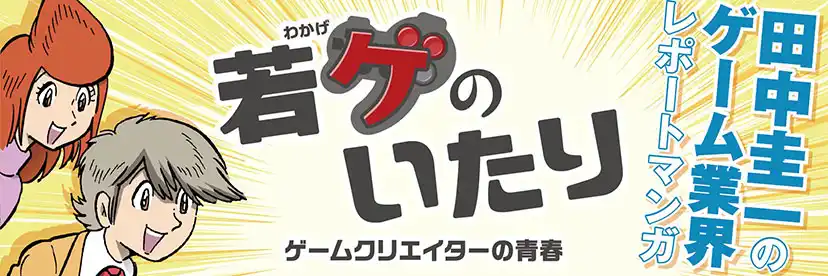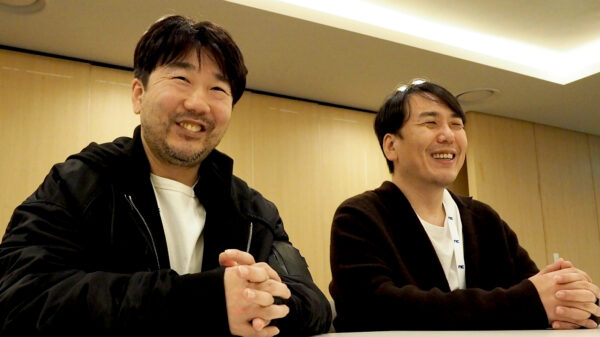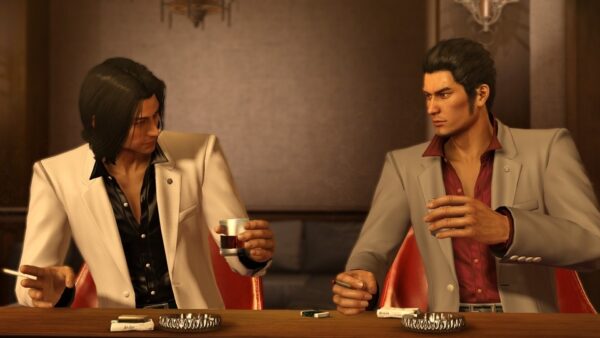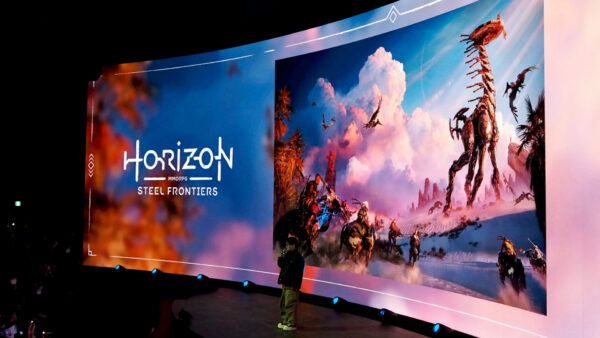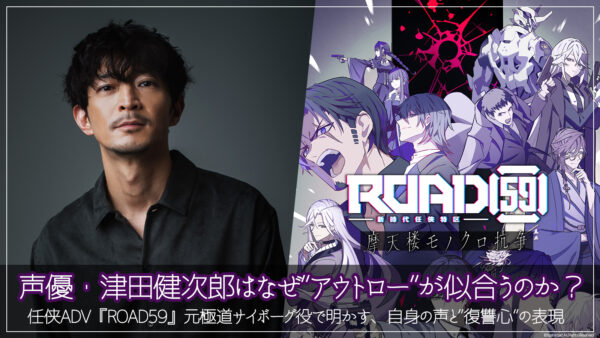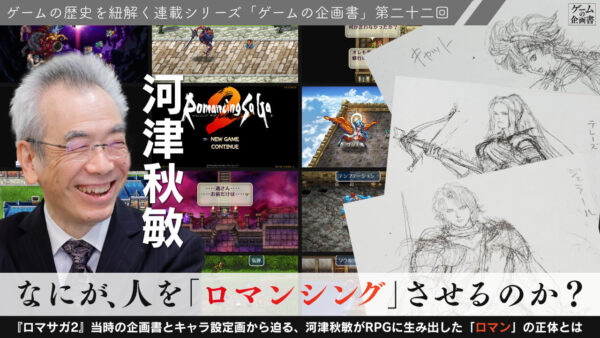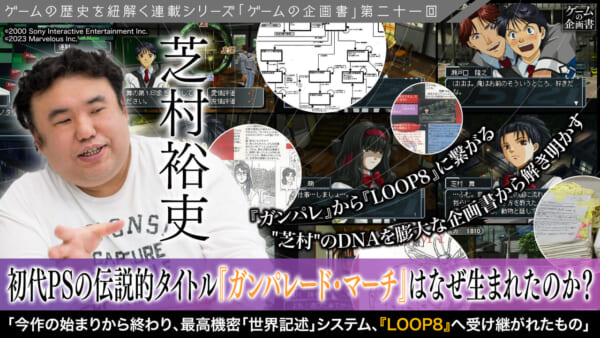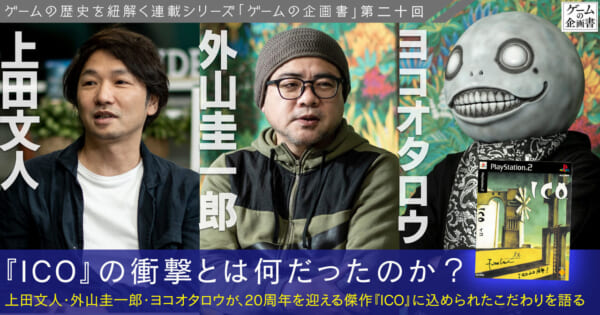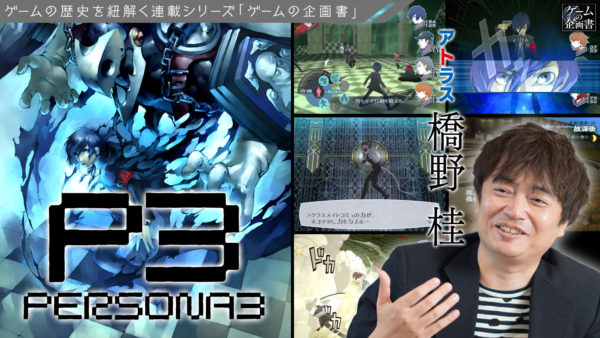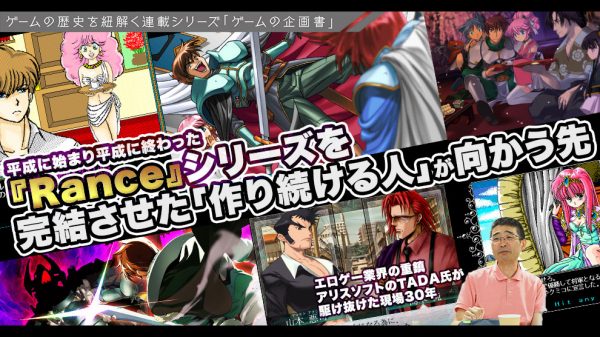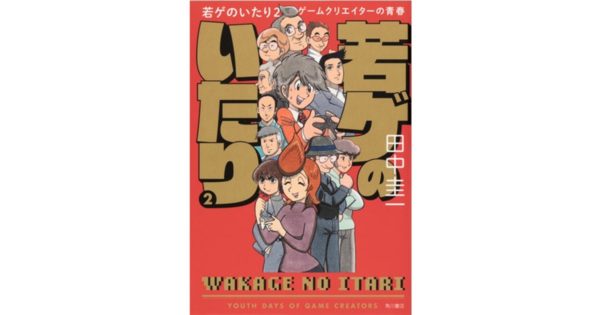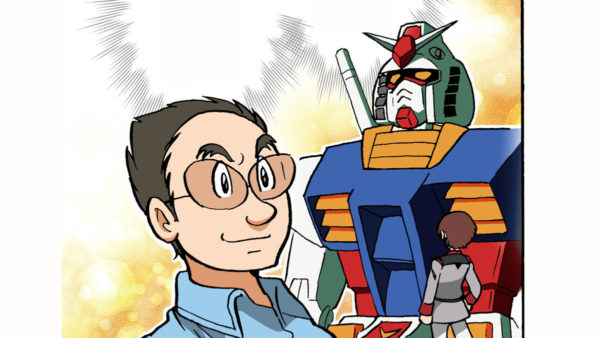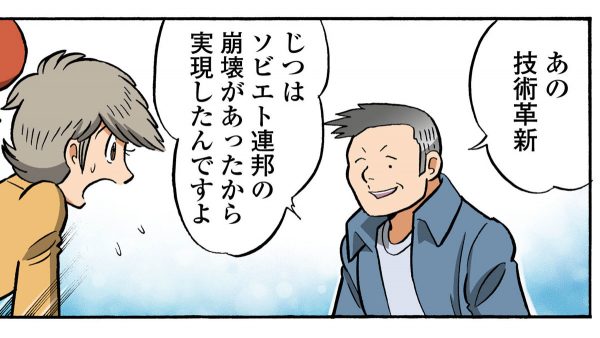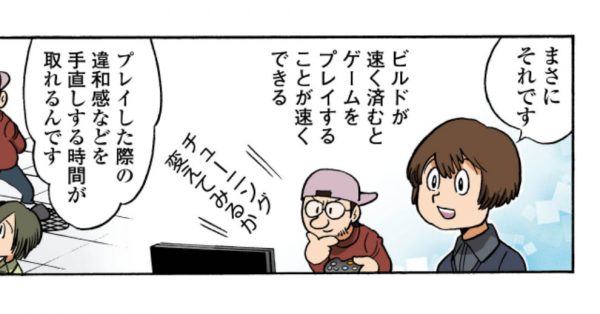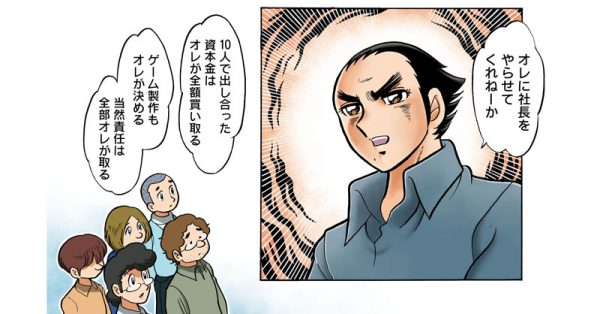“Humans have evolved into a Starchild!”
One midnight, during an internal office chat at the Denfaminicogamer editorial department were the words “They’re crazy.” This was right at the end of 2016 after PS VR was released. As it were, the editorial departments odd excitement resulted in an impulsive interview about VR Contents “Rez Infinite” at the end of last year. This article is a written version of that insane seven hours interview.
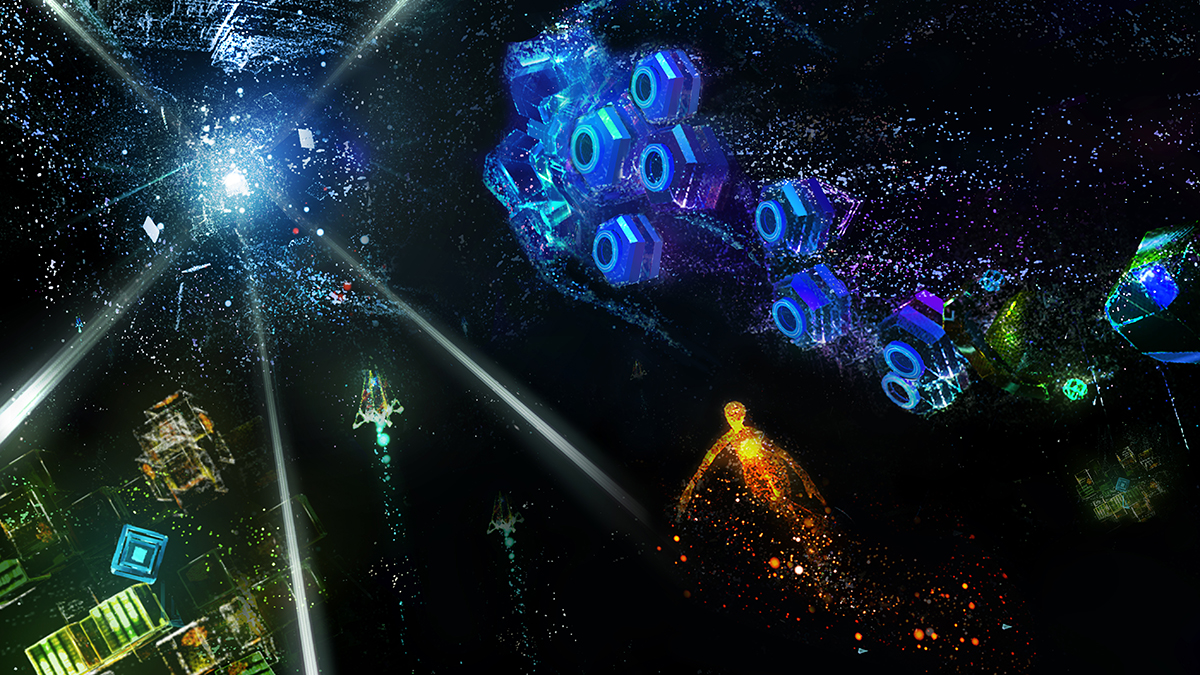 |
But since that night’s recording, it’s already been half a year.
Our sincerest apologies for the delay in completing this manuscript. The circumstances around VR has changed considerably. The PS VR, which was introduced as “delivering the VR experience to families” is still in short supply worldwide. Even now, most people cannot experience VR at home. Given this current situation, how the energy in this interview will be reflected in the eyes of our readers is worrisome.
In the meantime, “Rez Infinite” continues to produce enthusiastic fans among the few who have experienced PS VR. As if it’s an “OOPArts” envisioning the “contents of the future.” Later, this game was awarded “The Best VR GAME” at the North America’s “The Game Awards 2016.” And it has received high acclaim worldwide.

This article takes a thorough look at the life of Tetsuya Mizuguchi, the creator of “Rez Infinite.” For no other reason than that this work is a realization of a “vision” Mr. Mizuguchi has pursued throughout his creative career.
For one thing, he interviewed for SEGA barely knowing about the video game industry. And that his creative career started with explaining the possibility of VR to the interviewer is quite absurd. There are those who imagine Mr. Mizuguchi as a professor at Keio University and a “slightly difficult” artist recognized in contemporary art. But they will be surprised to hear about a rambunctious Mr. Mizuguchi who ran through SEGA in the 90s.
Now, let’s hear about Mizuguchi’s unknown “delightful side” and “long lonely battle days” with an old acquaintance, UEI president Ryo Shimizu.
Interviewer/Ryo Shimizu、TAITAI、Hotate Inaba
Writer/Hotate Inaba
Photographed by Yusuke Masuda
Translated by TELEPASEE
日本語版はこちら:水口哲也のハチャメチャ人生が『Rez』で人類を進化(?)させるまで。「制約が創造を生む」なんて、もう言い訳しない【ゲームの企画書:水口哲也氏】(2017年5月1日公開)
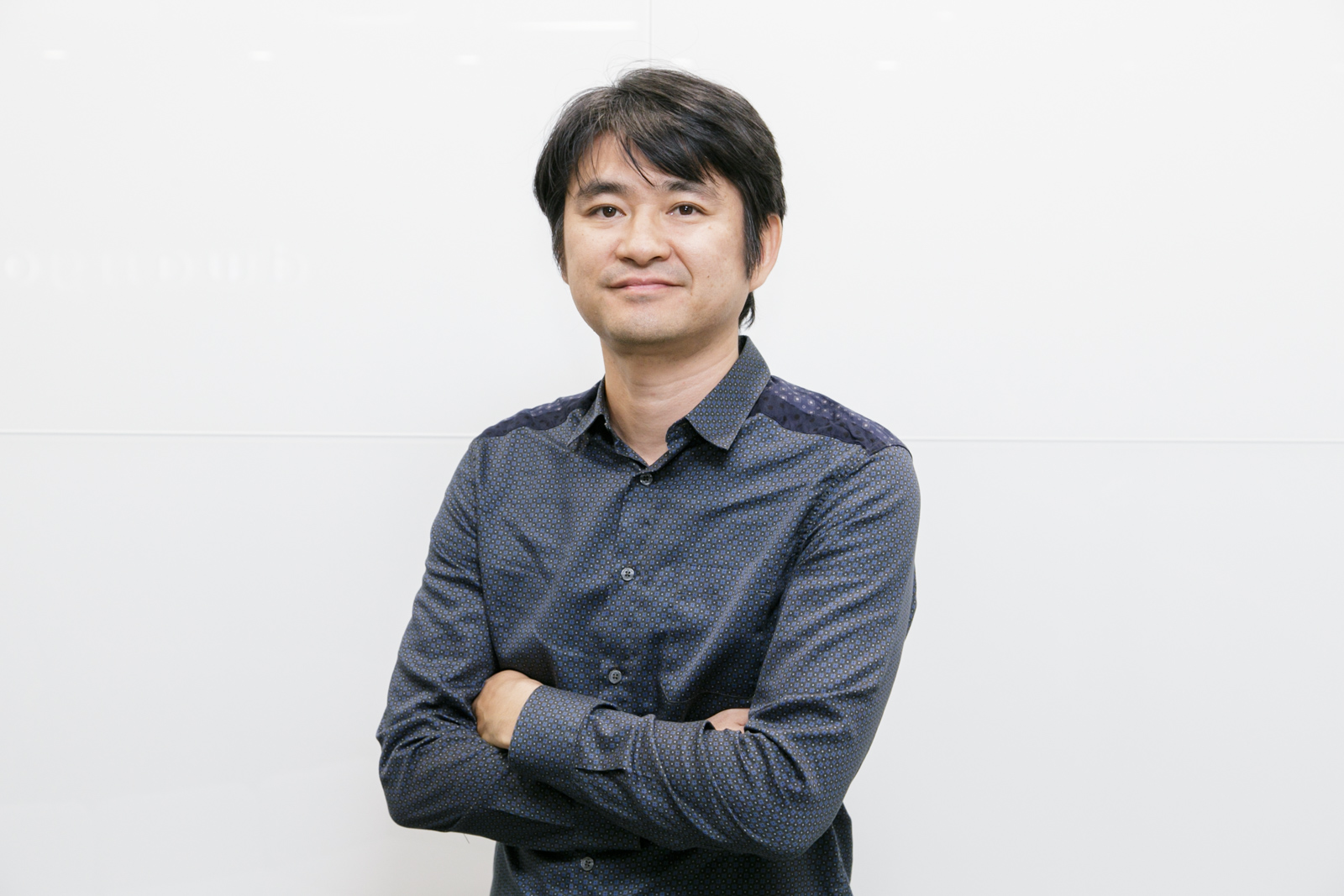 |
“Video games have finally entered/made their way into a new dimension”
Ryo Shimizu:
The first time I played “Area X,” I cried. Midway, I thought, “Ah, video games have finally entered a new dimension,” and I couldn’t stop the tears. After I finished, I took off the headgear and hugged Mr. Mizuguchi. I didn’t want to just say something dull like, “it was fun.”
Tetsuya Mizuguchi:
Yeah, that made me happy (laughs).
— I understand that feeling. A person who finished playing in the editorial department said, “Humanity has become a STARCHILD[*]” on the company chat messenger, which made me laugh.
*STARCHILD
An illusionary life form that appears in the movie “2001: A Space Odyssey” (1968). Opinion is divided, but seen as a kind of super-human that has surpassed humanity.
Shimizu:
Mr. Mizuguchi is a person who was always struggling with the challenge of creating art within the frame of consumer games. And now, with VR in our hands, Mr. Mizuguchi’s vision is clear in anyone’s eyes. Because with “Area X,” the experience itself moves people emotionally.
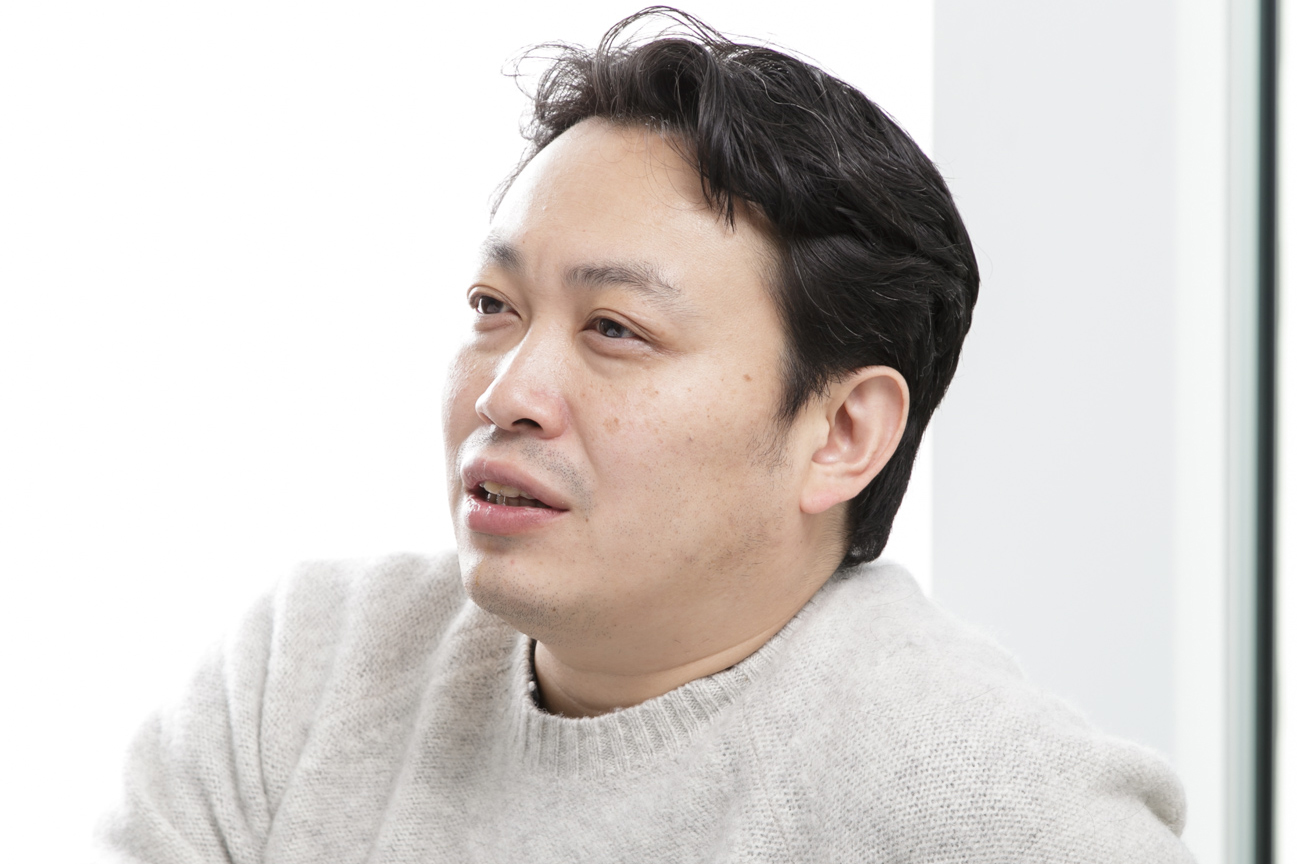 |
For instance, in erotic video games, I have seen some works where one part can move someone to tears. But that’s only the story line making you cry. And “Mario” and “Xevious[*]” are fun, but nothing deeply moving. With “Area X,” the “experience” itself has reached the point of making us cry. Frankly, after experiencing this, all media art so far seems incomparable.
*Xevious
An arcade game introduced in 1983 by (then) Namco. A vertical scrolling shooting game with the catch phrase, “The mystery thickens each time you play! ~ When will the entire picture of Xevious be revealed ~” “Hidden characters” such as mysterious pieces were scattered throughout the game, leading to gossip of secret tricks and rumors between excited players.
— Truthfully, most projection mapping looks faded. But compared to other VR games, “Area X” is powerful without question. I think there is enough to completely change how we look at all digital representation.
Shimizu:
The same way Osamu Tezuka felt inferior while polishing his manga into fine art, video games have a desire to become art… this kind of inferiority, I think everyone had it.
No one wants to admit that though. Only Mr. Mizuguchi kept challenging it head on without hesitation. And finally, it’s become reality.
— I think the people who have played will understand Mr. Shimizu’s feeling. The VR experience isn’t something that can be easily explained in writing. If you have to explain it, the feeling is like the moment you first played a video game. Or that moment when video games entered the 3D era with “Mario 64.” Everyone was stuck with how to move forward and in an instant, 3D games cleared that away. I think the impact of “Rez Infinite” is also historical.
Shimizu:
But Mario doesn’t make me cry. That’s why I think it means that video games have entered a new dimension.
— That’s true…is this article going to be ok? (laughs). I’m not sure if the readers will be able to follow our excitement. Maybe we should look at things objectively.
Mizuguchi:
But I’m happy. To hear those kinds of stories.
Shimizu:
Really?
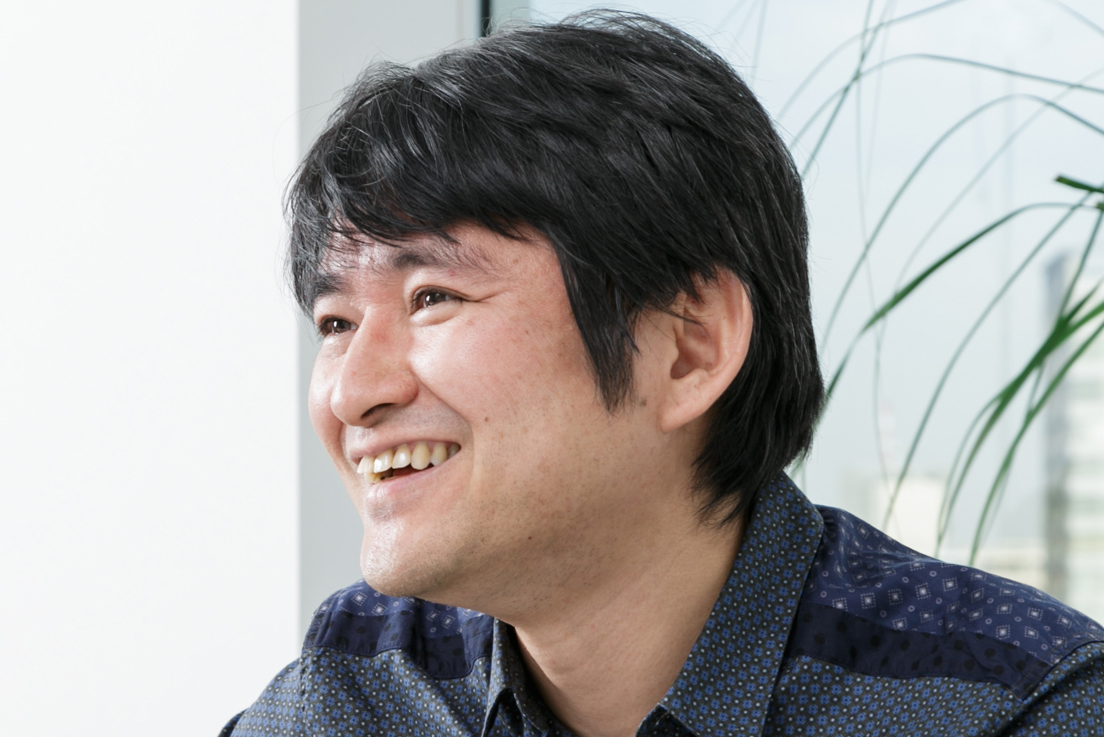 |
Mizuguchi:
Well, you know, with video games, you can’t know everyone’s actual reaction. The internet’s response is only a sliver of that, too. So for a long time, there’s a kind of “loneliness.” To begin with, when “Rez” was released in 2001, the reaction was pretty dull. Some people even said “this isn’t a game.”
— But now, it’s a masterpiece with hardcore followers.
Mizuguchi:
Well, I can say this now but… there were times when I became really depressed and thought “Is there even a point in making this game.” There wasn’t much reaction from the players in the beginning, so after the release, out of nowhere, I felt like I was hit by this sense of emptiness.
Of course, if I think now, that’s just the arrogance of the creator. Because It would have been a pretty big deal if tons of people were suddenly impressed after playing “Rez.”
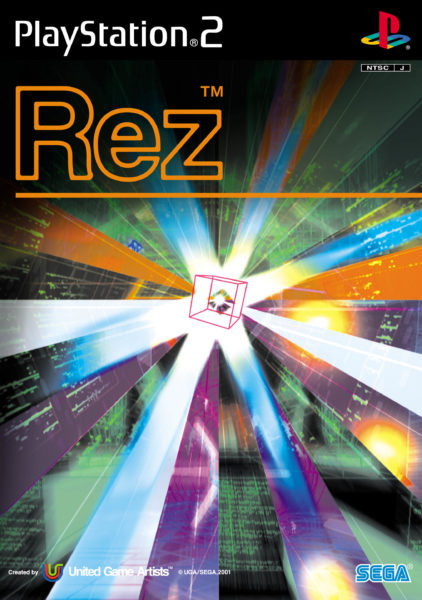
But the funny thing is, the feedback from the players came slowly over time. It’s kind of interesting how it increased as time passed. I learned that acknowledgment is something that comes gradually and slowly. And now I’ve grown accustomed to the loneliness.
Is the key word “loneliness?”
— “Loneliness” might be the key word for today. To be honest, until I played “Area X,” I couldn’t see what Mr. Mizuguchi was after in “Rez” and the explanations in game magazines didn’t make much sense. But after experiencing “Area X” and re-reading past articles… I’m embarrassed by my ignorance. Now it’s clear that Mr. Mizuguchi has been aiming for this vision non-stop for a long time.
Mizuguchi:
When the first “Rez” was completed, there was a strong feeling of “Let’s stop here for now.” Generally, when you first imagine something, it’s seamless, it’s 3D, and becomes this huge thing in your mind.
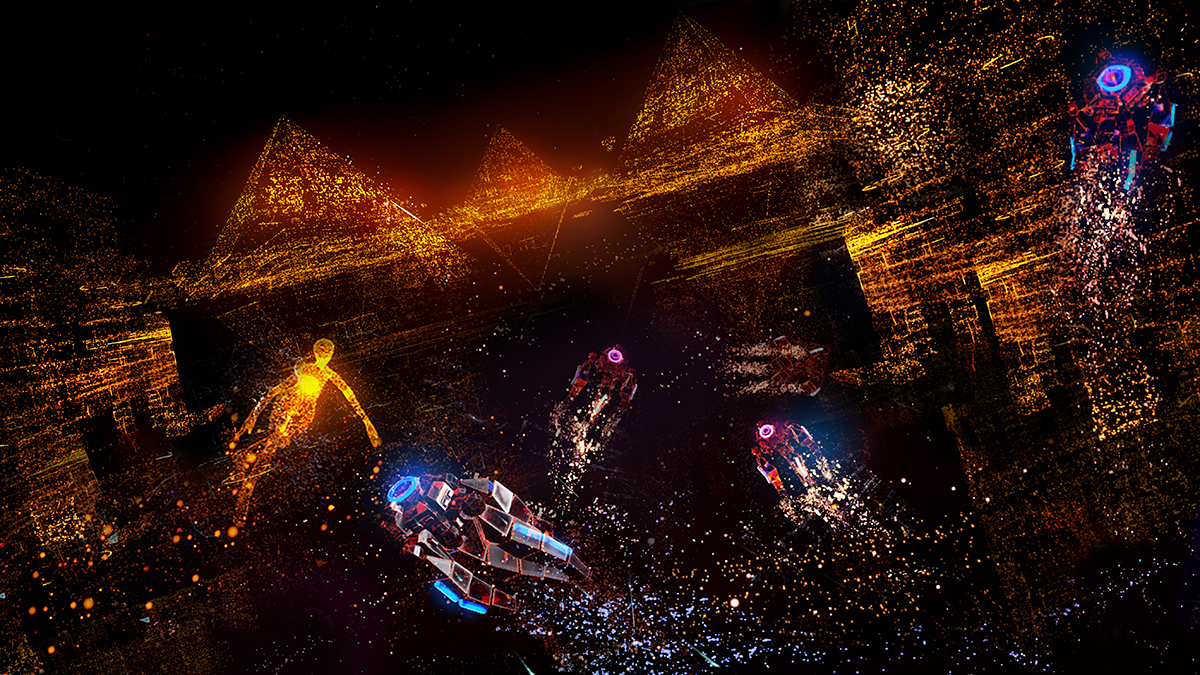 |
But in reality, you have to try and resolve everything within a square TV display. In front of a TV, you can’t look behind you, so it’s full of limitations. But up to this point, we kept telling ourselves, “creativity is born from limitations,” and tried to fit everything into this square TV frame. Now thinking back, with “Rez Infinite” complete — it was painstaking.
— Before, when gamification[*] was popular, I remember reading an interview where Mr. Mizuguchi said exactly that — “From limitations creativity is born.”
*gamefication
Implementing game elements, such as game design techniques and mechanisms or motivational methodology to areas other than games. Its application fields ranging from improving customer loyalty to enterprise organization management and fitness.
Mizuguchi:
I was just telling myself. (laughs)
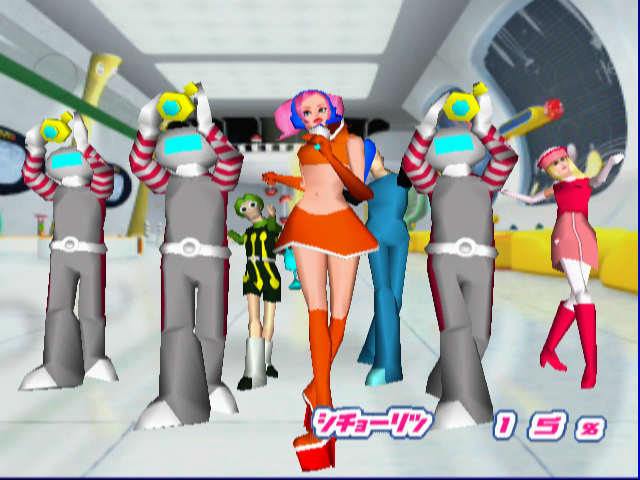
Trying to create in VR this time around, I realized that “limitations” are very frustrating. Really clearly. Because, in the first place, the music in “Rez” and “Space Channel 5” is an important aspect of the game. But back then, there was no headphone jack on the Dreamcast[*] or PS2. If I say so myself, It’s pretty amazing I made a music game in that kind of environment.
*Dreamcast
A home video game console released by (then) SEGA Enterprise in 1998. A combined word that wishes to broadcast dreams. Also referred to in Japan with nicknames such as “Dryas” “Doka” “Mukya” “DC”, “Naruto” from the swirl logo. However, the company withdrew from manufacturing home game consoles in January 2001.
—I think that Mr. Mizuguchi’s games, where he was chasing after his vision —we didn’t understand them well.
Mizuguchi:
Well, the inside of my head was in a crazy state, too. It was really frustrating (laughs). But technology advances, so I believed that one day I would realize my vision. There’s nothing more great than that we’re now in a place where I can dedicate myself to creativity without any stress.
Shimizu:
In the first place, most game designers of Mr. Mizuguchi’s generation, like Yuu Suzuki or Hironobu Sakaguchi, came from programming backgrounds. With programming, they expressed their love for the arts like manga and films with video games and, in turn, became hit game makers, which is pretty easy to understand.

(Image of a VR conversion Dali’s work from Dreams of Dali: Virtual Reality at The Dali (Trailer))
But Mr. Mizuguchi is a person who continued to seek a way to show “what I must express.” Basically, “Rez” is to Mr. Mizuguchi what “The Melting Watches (Persistence of Memory)” were to Dali. While Mr. Mizuguchi is handling the title of game designer, he is also expanding into music and film production. It’s the same as how Dali worked on an animation with Disney and filmed a movie at that time.
—I understand what you’re trying to say. I think that Mr. Mizuguchi is a creative who’s been misunderstood. So the goal of today’s interview is to turn over that image.
Shimizu:
Up to this point, Mr. Mizuguchi’s works required imagination and education from us. But that’s because it’s art (laughs).
On top of that, in an old TV documentary program, you can see him making unreasonable requests from the engineer. I first heard Mr. Mizuguchi’s name when I took on the job for Dreamcast’s “SEGA Rally Championship.”[*] I heard, “There’s a guy called Mizuguchi in charge who can’t even program and he bothers the engineers with technically impossible demands.”
So my first impression of Mizuguchi was the worst. Sorry (laughs).
*SEGA Rally Championship
An arcade-type racing game released by then SEGA. Later, the SEGA Saturn expanded it into a multi-platform game, including Windows PC, cellphones, Game Boy Advance, and Playstation2. A system that modeled existing rally cars was innovative at the time, considered as the origin of the racing game genres.
 |
Mizuguchi:
It’s ok (laughs).
Shimizu:
But finally, with “Area X,” it’s like, “Oh man, he’s the real deal.” Mr. Mizuguchi’s talents are clear in anyone’s eyes now. So it’s really frustrating that PS VR isn’t widespread yet.
He was actually a reader of “LOGiN”!?
— So we couldn’t figure out where to begin asking about Mr. Mizuguchi.
Shimizu:
How about the rumor that Mr. Miguzuchi suddenly said to an executive at SEGA, “I don’t want to make video games!”
— That’s an amazing story.
Mizuguchi:
What an old story…. Well, I did have an interest in video games themselves. But I didn’t actually know much about the video game industry. So when I said to a SEGA executive that his company’s catch phrase “We create play” is cool, he replied, “That’s Namco’s.” (laughs)
Everybody:
(laughs)
— Hmm (laughs). Like the creatives of your generation, was there any interest in PC culture? The current Mr. Mizuguchi seems like someone who is inspired by the TED or Wired culture of the West Coast IT industry. But maybe the Akihabara type Japanese home PC culture is the source of Japan’s video game industry.
Mizuguchi:
I’m not really like that… But I really loved reading the magazine “LOGiN.”[*] I was obsessed with it.
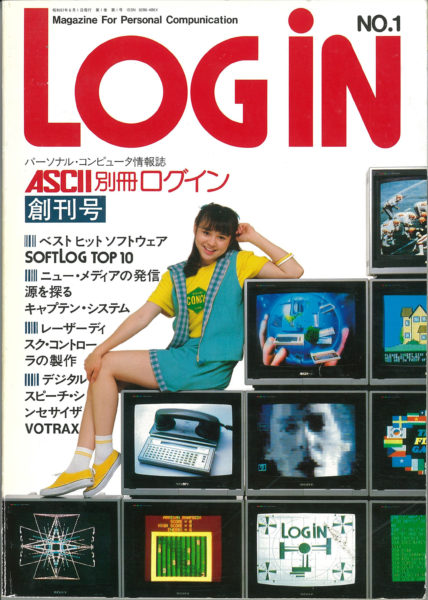
(Image provided by KADOKAWA)
Shimizu:
What, really? (laughs) That was unexpected.
— I thought you would say you subscribed to “Wired.” Anyways, why?
Mizuguchi:
Login had this strange fever. The comments by the editors were absurd, too. I also had an interest in technology. But back then, I could never have imagined that my future self would be creating video games. In the first place, we never owned a game console at home. If I played, it would be at a friend’s house or at the arcade. And then one day, I came across this book called “TV Game: Denshi Yugi Taizen”.[*]
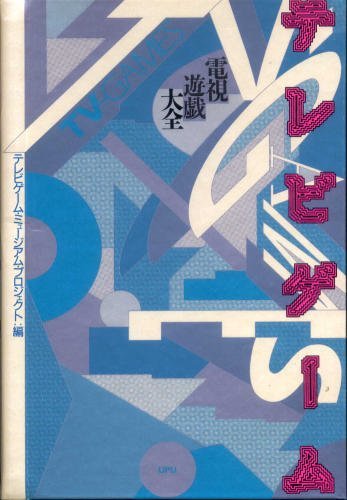
(Image from Amazon)
It was shocking. Apple to Nintendo, cults to hit games, it was a genealogy of digital games up to the present day and compiled like art. I read it over and over, which was the catalyst to a strong interest in video games themselves.
—That’s the book Pokemon’s Tsunekazu Ishihara[*1] and Satoshi Tajiri[*2] produced together. We probably have it in the editorial department, too.
※1 Tsunekazu Ishihara
A Japanese game producer and video game designer born in 1957. As a student, he learned how to create image expressions using the latest CG and was later influenced by video art and computer art. Has since been involved in all Pokemon software as producer. When publishing “TV Game: Denshi Yugi Taizen,” he took control as general manager from planning to completion.
※2 Satoshi Tajiri
Video game designer born in Tokyo in 1965. President & CEO of Game Freak Co. LTD and the creator of the Pokemon series.
Mizuguchi:
Ooh, you have that book… how nostalgic! When I was a student, my teacher, Mitsuhiro Takemura, asked me to deliver a package to Ishihara’s company inside Wave at Roppongi[*]. I was in awe thinking, “So this person is Mr. Ishihara,” as I handed the package. Later, I told Mr. Ishihara about that story when I met him again as an adult, but he didn’t remember it at all. (laughs)
*WAVE at Roppongi
A building in Roppongi, Tokyo that housed WAVE, which sold audio/visual software and CDs/DVDs. Although the business received high support from cultural people and musicians, it withdrew from the area with Roppongi’s redevelopment.
Shimizu:
Well of course!
Or rather, who knew there was a time when you looked up to others (laughs). I’d like to tell this story to the current youth and say “There was a time when that Tetsuya Mizuguchi was an unknown boy!” Everyone will be encouraged.

Mizuguchi:
Of course, everyone is unnamed in the beginning (laughs).
— Well, well (laughs). But before, when I held a tribute interview for Mr. Iwata, I asked Mr. Ishihara about that time. I was a bit surprised that there are some people who drifted into the early game industry from the context of CG in media art. It seems that Mr. Mizuguchi and Mr. Ishihara come from the same origin in that respect.
There’s a future in entertainment for SEGA
— But even so, when I listen to your story, it seems like it was a natural flow into the game industry. Why did you apply to SEGA in the first place?
Mizuguchi:
After reading “TV Game: Denshi Yugi Taizen,” my interest in creating video games was born. But I barely knew what kind of companies existed or anything specific.
Shimizu:
So you didn’t know anything about the real industry (laughs).
Mizuguchi:
But one day, I came across an arcade machine called “SEGA R – 360” [*] at the arcade. It was this huge enclosure that spun around like a gyroscope. My eyeballs almost fell out in amazement.
*Sega R-360
An arcade game announced by SEGA (now SEGA · Interactive) in 1990. A sensory game machine with a rotation mechanism of 360 degrees along the x axis and z axis directions. Although it cost 500 yen to play, which was five times the average at that time, it boasted tremendous popularity.
So, when I thought “Who is making this!?,” the case had a logo with the letters “SEGA.” From that day onward, I was curious about this company called “SEGA.” Besides, from the screen, how do I say it… it was like I was looking at the blue sky from the American West Coast or the Mediterranean. Seeing such color, you think, “somehow, the whole world is connected over there.” (laughs)
Shimizu:
Well, originally, SEGA was a foreign-affiliated company at that time, and the logo was a bit like a star-striped flag. And between game lovers, there was a way of describing games as “SEGA-like.” Games like “AfterBurner,”[*] which were elaborately detailed and realistic to the point that you wonder if it’s necessary. It was incredibly spicy.
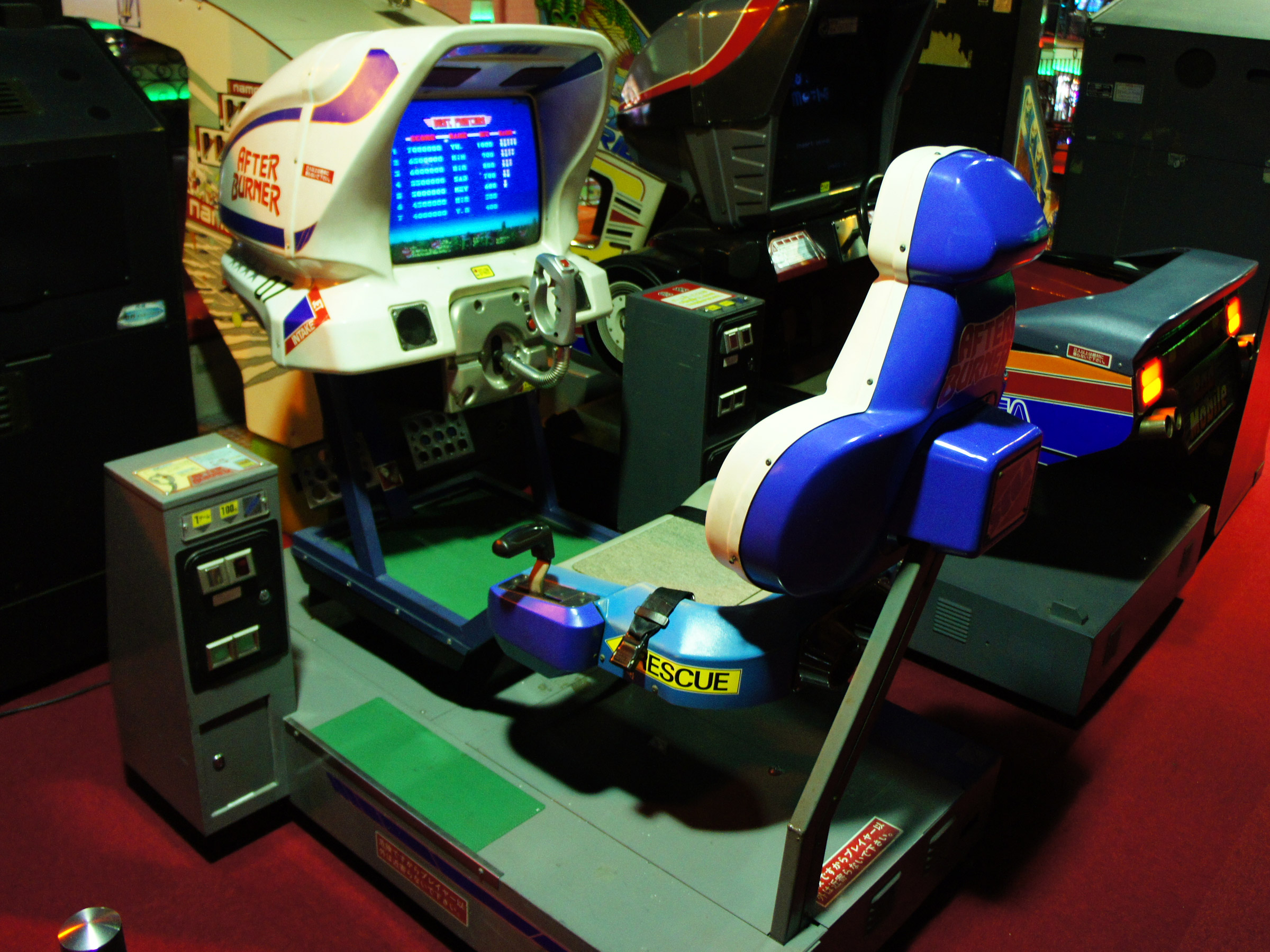
(Image by 空練~commonswiki. Licensed under the terms of cc-by-3.0.)
Mizuguchi:
I felt this decisiveness in SEGA’s attitude of advocating a global view and using technology “to make anything as long as it’s fun!” It was something I couldn’t find in other Japanese companies. So I arbitrarily saw this creative future on the other side of SEGA. That’s why Namco and Nintendo weren’t considered. So I barged into SEGA and got a job interview.
— Wait, does that mean you didn’t apply as a recent graduate?
Mizuguchi:
No, I think I did, but the SEGA wasn’t such a big company yet. So I went to the reception at the Haneda Headquarters and asked, “What do I need to do to work at your company?”
Everybody:
(laughs)
— Suddenly, a mysterious college student appears and says, ‘Hire me.’
Mizuguchi:
But they told me, “Please contact HR first for an interview.” So through an acquaintance, I was introduced to someone who worked at SEGA. Then it was decided I would meet with Mr. Hisashi Suzuki[*] who is in charge of all the development in SEGA.
※Hisashi Suzuki
Began working under the President Nakayama Hayao and supervised the development of arcade machine games. With the split up of the company in 2001, he served as president of SEGA-AM 2, and after re-merging, as vice president of SEGA. Appears as the boss who opposed development in behind the scene stories about the development of games like “Hang On,” “Space Harrier” and “Virtual on.” Also well known for naming the arcade system board NAOMI (derived from the supermodel Naomi Campbell) and the many episodes from his heated personality.
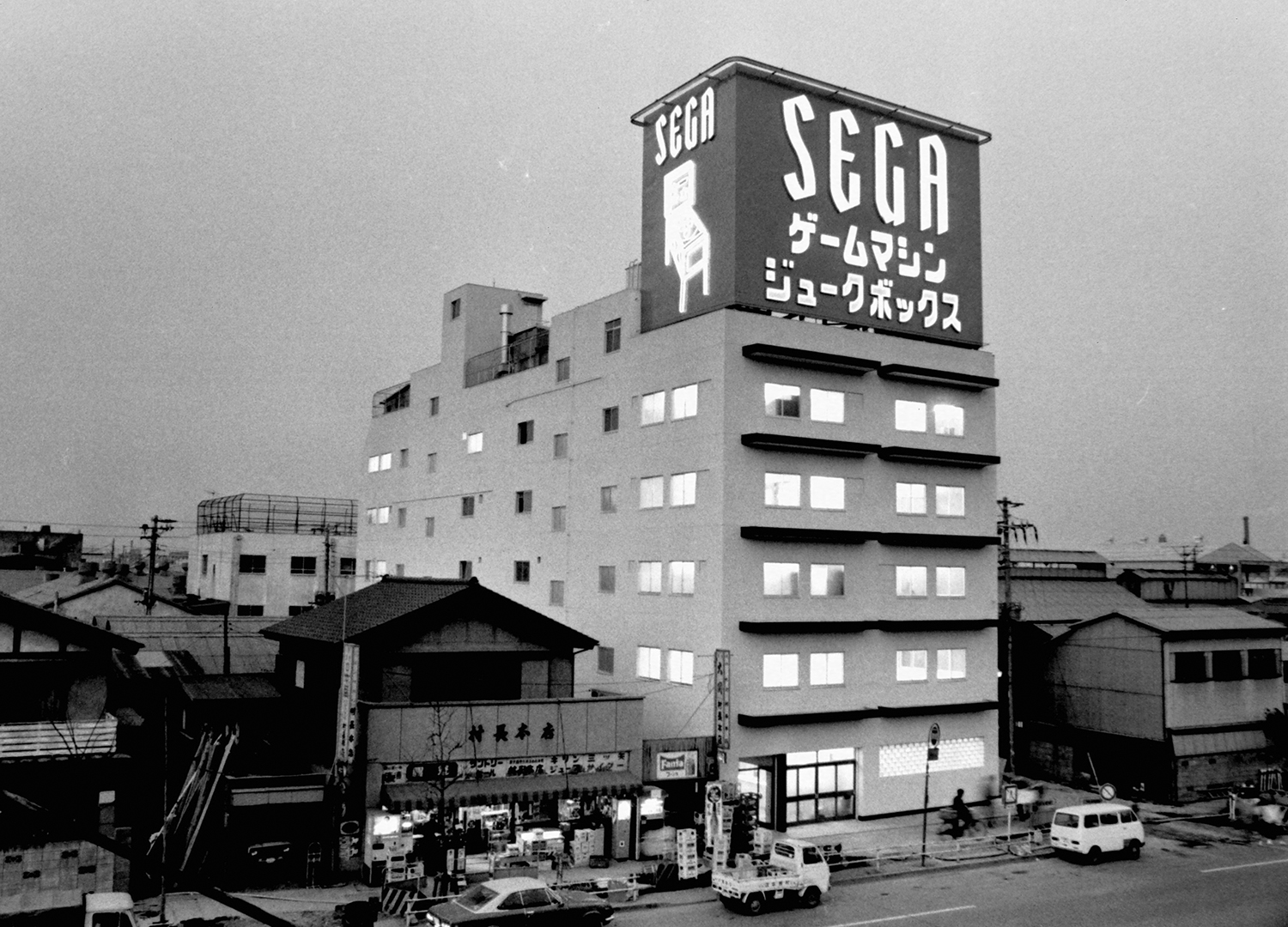
Insisting to the interviewer, ”I don’t want to make games!”
– Is that person, the same as the boss who made Yu Suzuki believe, ”Let’s make video games for this person,” mentioned in his series?
Mizuguchi:
Probably. Mr. Yu Suzuki was a key man in creating the atmosphere of free development at SEGA. Yu Suzuki , Mark Cerny[*], and Hisao Oguchi, who later become the president of SEGA, everyone looked up to him. Even Michael Jackson. When he stopped by SEGA, it was always “I want to see Yu Suzuki.”
*Mark Cerny
Born in the US in 1964. Video game designer, programmer and game producer. Entered the University of California at age 13, graduating at age 17. Worked on masterpieces such as “Sonic the Hedgehog 2,” the “Crash Bandicoot” series, “Jack and Daxter” series, “Ratchet & Clank” series.
— Wow! There’s always a key-person’s name, who general game lovers don’t know, that comes up in interviews about game companies from that time. Even in Nintendo or Capcom. It looks like SEGA had one too.
Mizuguchi:
Yup. So, Mr. Suzuki always spoke like an Eddoko (one who was born and raised in Tokyo by parents who both were also born and raised in Tokyo) with rough language. When I first met him during the interview, I was asked “So you’re called Mizuguchi…huh? And whaddya wanna do at SEGA?” And I answered, “It’s not games that I want to make.”
— So after barging into the company, you claim “I don’t want to make games.” (laughs)
Shimizu:
It’s like, “What did you come here for?” (laughs).
Mizuguchi:
It’s a little embarrassing (laughs).
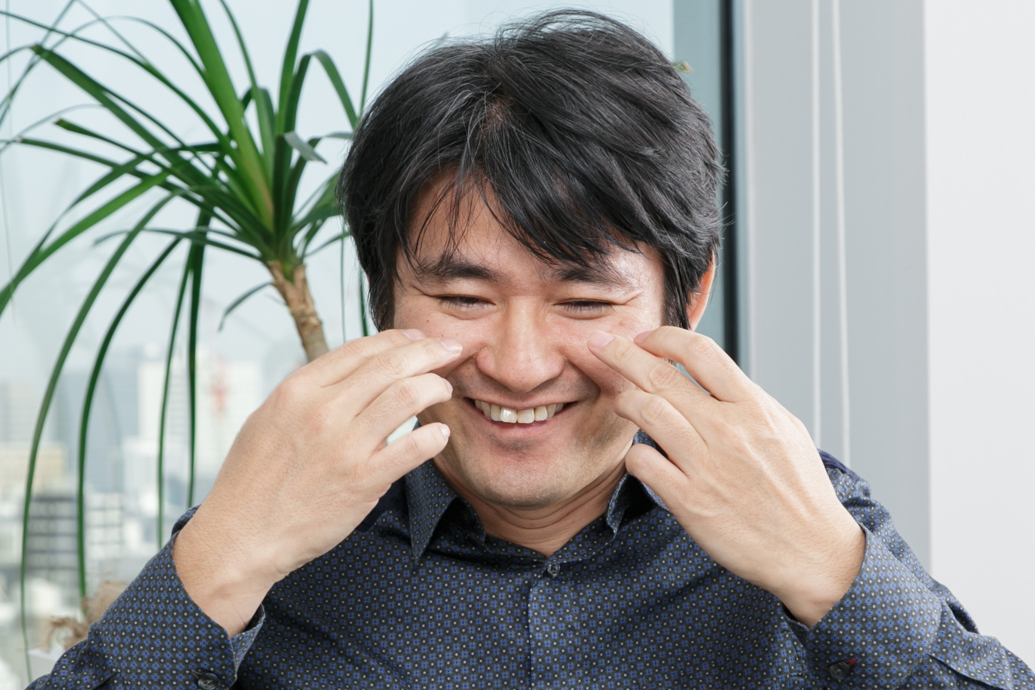 |
Mr. Suzuki was surprised, too. But I also said “What I want to make is not like video games that already exist. I want to make something more amazing, like the future entertainment.”
Shimizu:
Oh man, it’s the arrival of the confident new comer.
Mizuguchi:
Then I showed Mr. Suzuki the magazine I was making at the time. It was a visual book of about 40 pages that forecasted technology, art, and entertainment. And right there, it introduced an experiment with VR called “virtual environment display system.” It was supposed to be a simulation of remote work on Mars by NASA ‘s Ames Research Center[*]. While showing the picture, I explained to Mr. Suzuki, “One day, 3D CG technology and virtual reality will definitely be a part of the game industry.”
*Ames Research Center of NASA
Facilities of the National Aeronautics and Space Administration (NASA). Researches diverse fields, such as information technology, machine learning, and artificial intelligence as a part of aerospace engineering, biology, space science and space development technology research.
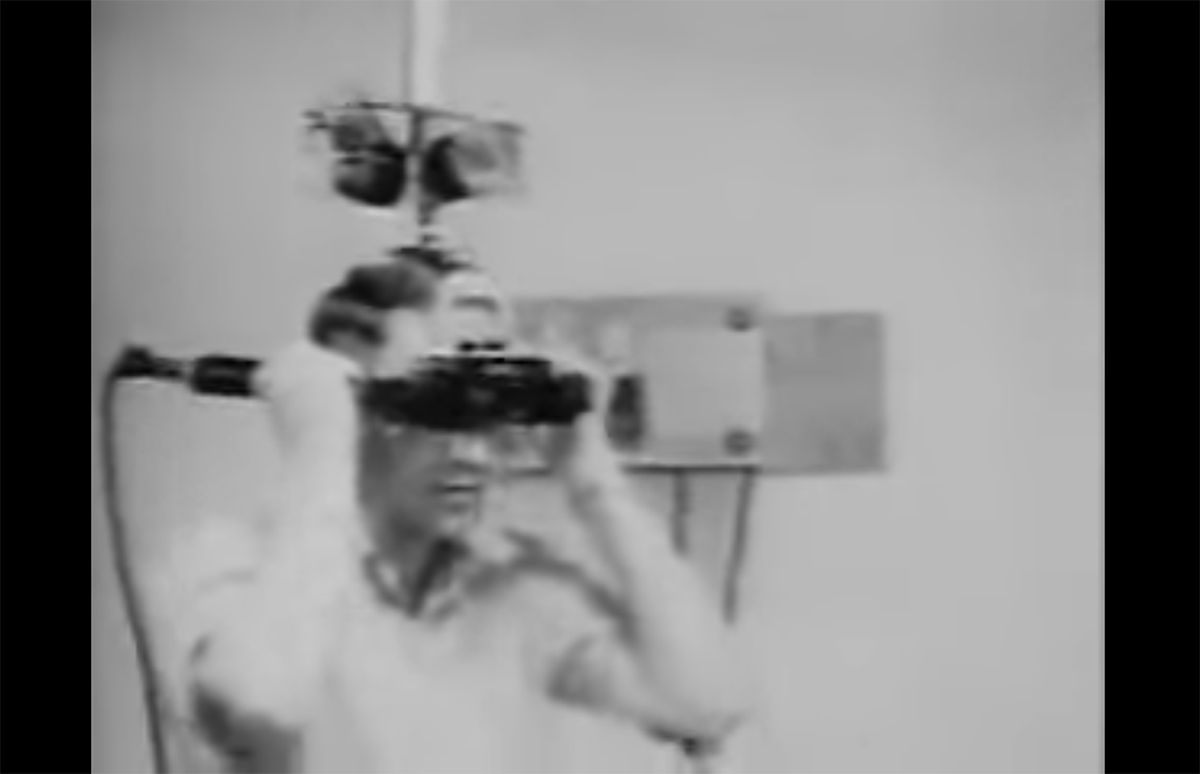
(Image from Ivan Sutherland – Head Mounted Display)
Shimizu:
At that time, there was only an admiration for that kind of mechanism.
Mizuguchi:
It was ’89, so there wasn’t even the letter C in CG in the game industry yet. The word “virtual” didn’t even exist. But I sold myself by saying, “Such a time will come. And then, you’ll definitely need someone like me,” (laughs).
— That’s amazing. So basically, from the beginning of your career, you were pushing for virtual reality. And what was Suzuki ‘s reaction?
Mizuguchi:
He said, “… what’s that, a refrigerator?” (laughs).
Shimizu:
That’s Partial (A refrigerator sold by National (now Panasonic))!
Everyone:
(laughs)
Mizuguchi:
Yes, at that time, there was a refrigerator commercial where Bunta Sugawara would say, “It’s the age of Partial!” I said, “No, that’s a refrigerator, this is virtual!” (in Japanese the pronunciation of virtual and partial is similar).
— It’s like a comedy act…
Mizuguchi:
Then, in the middle of the interview, Mr. Yu Suzuki says, “Well, I guess we can have one like you …”
He had a really good nose, and had a hunch about me. “Ok, come to my place” and it was a quick decision. And then, Mr. Suzuki said to me, “You think too much with your head, think more with your nose” (laughs). “Imagining interesting things can’t be learned at school.” He often said that again later.
— What an interesting character. So it was that kind of person who was the key-person at SEGA then.
Shimizu:
Well, the SEGA then was like what you could call an IT start-up now.
Mizuguchi:
Right, right. At that time, it was like a start-up company atmosphere. And then I asked, “I’m sorry, there is one more request, but …. I will definitely work at this company, so can you please skip the whole hiring process up to my orientation day?” At that time, there were gatherings to get to know the prospective candidates, but I begged “Please can I skip all of that”.
ー You struck again.
Mizuguchi:
Mr. Suzuki asked “Why?” so I explained, “I want to travel around the world as much as possible so please let me be free. I’m going to experience various things in order to be successful at SEGA … I will definitely come to orientation day!”
 |
Everyone:
(laughs)
ー A promising young person … but you’re just doing whatever you want (laughs). And did he OK it?
Mizuguchi:
Mr. Suzuki said “I guess it’s all right.” From there, things got interesting. In March 1990, just before joining SEGA, I took a car around North America for a month.
First, I rented a car at San Francisco International Airport, and headed straight to Chicago. After stopping by Canada, I crossed over to New York and continued down south. I went from Florida to Mexico, passed through the desert and returned to San Francisco.
But while in extremely cold New York, where I traveled in the middle of the trip, someone broke the windowpane of my car in a parking lot. From my money, my passport, to my clothes—everything was stolen. All I had left in my hands were some underwear and a credit card.
— Oh no. And the promised orientation day with Mr. Suzuki is fast approaching…
Mizuguchi:
Shivering, I had the car repaired in Manhattan, and then soon fled south to summer, like Florida. At the bank, I begged them, “My passport was stolen and I only have a Japanese license, but please lend me some money with this Saison Card!” They did, so I was able to return to San Francisco.
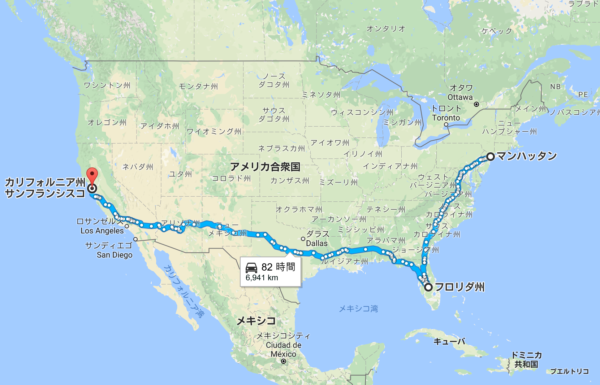
Shimizu:
You just mentioned in passing how you went from the east to west coast (laughs). I can’t help it, but I’m amazed.
Mizuguchi:
But I didn’t have any money, so I had to eat cheap Chinatown food every day. There are lots of high-end restaurants that probably serve delicious lobster in the San Francisco wharf, but all I had was about about 20 dollars in my pocket. So I thought, “I just want to take a look,” and brought my face closer to the window like this…
— What are you doing …? (laughs).
Mizuguchi:
I went to the toilet in that building. And, while I was taking care of my business, the person next to me is peeking at me. I was thinking “Oh man, this is bad because I am in San Francisco ….” when that person suddenly said, “Mizuguchi, right …?” in Japanese.
And look who was standing there but Mr. Hisashi Suzuki! Our faces met and we both say “What ?!”
Shimizu:
Whoaaa! Oh right, it’s because SEGA of America was in San Francisco!
Mizuguchi:
So, Mr . Suzuki asked me, “What are you doing here!?” And I explained “Well this and that happened” about my trip’s details in front of the toilet (laughs) . And it was in front of that bathroom, Mr. Suzuki introduced me to a young Mark Cerny.
– Mark is the developer of “Marble Madness” and also participated in “Sonic the Hedgehog 2,” right?
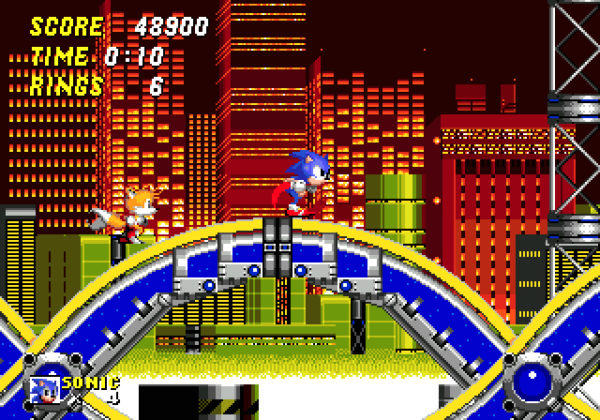
Mizuguchi:
That’s right. I think it was about the time when they were trying to put together a development team for “Sonic 2” in the US. And Mr. Suzuki reminds me, saying, “Hey, you’re really gonna come to our place right?” I answered “Of course, I will be there!” I’m pretty sure it was five days before SEGA’s orientation day.
Shimizu:
Wow, it’s like a manga story. By the way, did he lend you money to get back?
Mizuguchi:
No, nothing like that (laughs). Just, ”You, you better be there at orientation!”
Shimizu:
You couldn’t even eat lobster and were just warned (laughs).
When I joined SEGA ……
Mizuguchi:
But, when I returned to Japan and entered the company, there’s that new employee training? Like, how to answer the phone, exchange business cards, and so on. They teach us that seriously and my young self hated it…
Shimizu:
Well, Mr. Mizuguchi is an expressionist (laughs).
 |
— Let me say, just before this, Mr. Mizuguchi exchanged business cards with me in the proper business manner (laughs).
Mizuguchi:
As soon as I joined the company, I overheard there would be the “1st Virtual Reality International Conference” held in Austin, Texas. I wanted to go so badly. So with determination, I went to Mr. Suzuki and said, “I really want to go, will you please give me a vacation?” And “I will pay for travel expenses myself.”
Shimizu:
There’s no time for you to be practicing how to exchange business cards (laughs).
Mizuguchi:
And then Mr. Suzuki let me go.
— That’s amazing. By the way, did Mr. Suzuki provide business travel expenses?
Mizuguchi:
No, I went with my own money.
Shimizu:
Again! Mr. Suzuki is strict!
— His decisions are generous, but not with money (laughs).
Mizuguchi:
But rather than as vacation, they actually treated it as a business trip. Probably, even now, there aren’t many new graduates who went on a business trip abroad only a few days after joining. Once I arrived at Austin, I was thinking, “How cool is this going to be,” but there were only about 20 people.
— Well, it’s an academic conference (laughs). Moreover, even in the research of science, it was probably a minor branch at that time.
Mizuguchi:
In the middle of the hotel lobby, there was a demonstration with all these wires and a person wearing a VR headset. The CG was flickering, too. It was like,”…… Eh, it’s just this?” (laughs)
But two years later, SEGA also stepped into the world of 3D with “Virtua Racing” and “Virtua Fighter”[*]. Well, it was an exciting time, and I think I came in at a good time.
